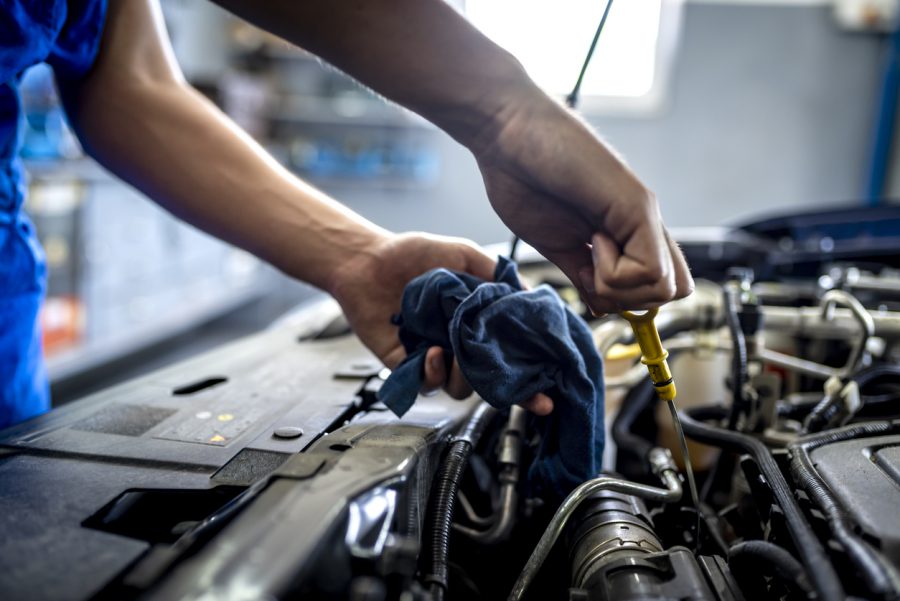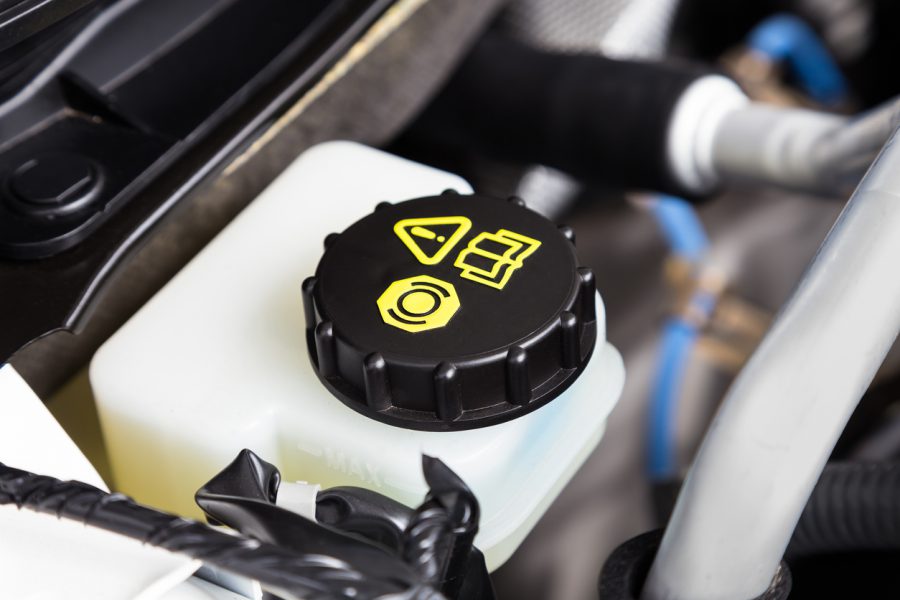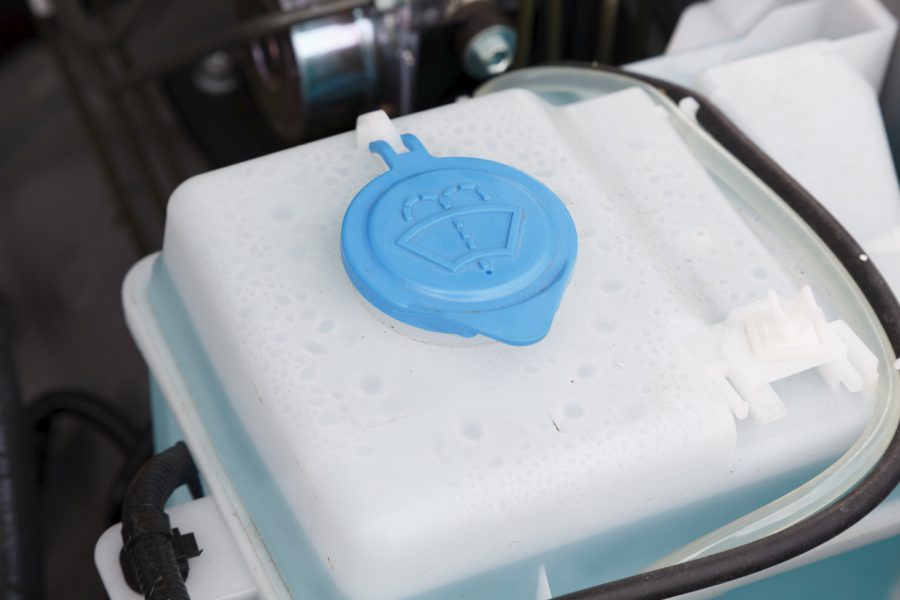
During lockdown, there’s every chance you won’t have been using your car as much as usual. Before driving it again regularly, it’s a good idea to check it and its fluids thoroughly.
All cars rely on fluids to operate properly. And it’s simple to check oil, coolant, brake fluid and screenwash. Follow my tips for doing so below.
When you’re checking a car’s fluids, it’s important that you park on a flat surface or you may think you haven’t got enough when you have, or more worryingly, vice versa.
How to check your oil
The most important of your car’s fluids is engine oil and although you can’t see the work it does, it’s easy to see how much your car has. Most cars have what’s known as a dipstick. This is usually a brightly coloured (often yellow) hard plastic loop somewhere in the engine bay. Newer, more upmarket models have an electronic dipstick. You access these on the car’s main information screen.
You will need…: An old cloth, disposable gloves (optional).
What you do: When the engine is cold, pull the dipstick all the way out. Wipe it on the cloth then push it all the way back in. Withdraw it once again.
You will notice at the other end from where you hold it there’s either a kink in the dipstick, perhaps two tiny holes either side of a space, or an area 1-2cm long with markings on. There should be oil showing between these two markings, ideally somewhere in the middle. It’s best to wipe, insert and remove the dipstick a couple of times, just to be sure.

If it needs a top up: When there’s no oil between the marker points, or if the oil is below the markers, you need to add some. We explain how to do so in detail here. In short, you will need to find the recommended oil for your car (it will be in the user manual or on some supplier websites when you enter your reg number). You then remove the oil filler cap and add oil in 50-100ml quantities, checking the dipstick after each addition to ensure you don’t add too much oil. If you’re in any doubt, consult a professional.
How to check your coolant
The coolant in an engine circulates to ensure not too much heat builds up from all the moving parts. The cooling system is a sealed unit so it shouldn’t need topping up with fluids if your car is regularly serviced. But sometimes damage, wear or corrosion can cause coolant to leak out.
You will need…: To know where the coolant reservoir is. This is usually a small, clear plastic tank. If you’re in doubt, consult your car’s user manual. Disposable gloves (optional).
What to do: Look closely at the coolant reservoir and you should see maximum and minimum markers. The level of fluid in the reservoir should be sitting between these two. If it isn’t, it will need replenishing.

If it needs a top up: It’s important the engine is cold when you do this or you could be scolded by steam. Carefully unscrew the top of the reservoir. Add water until the level is between the markers.
Coolant is a mixture of water and anti-freeze so if you have to top it up, mention it to your garage when you next have the car serviced. They can test the concentration of anti-freeze in the mixture and adjust it if need be. Read about your car’s coolant system in more detail here.
How to check your brake fluid
Your car’s braking system will work by using fluids to generate hydraulic pressure when you press the middle pedal. It’s a closed system but the fluid can leak out or absorb water which reduces its efficiency. It’s best to check this after you’ve driven your car for a short period to allow the system to charge itself.
You will need…: To find out where the brake fluid reservoir is. Your car’s user manual will tell you this. Disposable gloves and a torch (optional).
What to do: Stop somewhere safely on a flat surface. The reservoir should be white plastic probably with a black lid that has a yellow graphic of a brake on it. The reservoir will have minimum and maximum markers and you should be able to see the level of fluid between these. I use a torch as it makes it easier to see accurately.

If the brake fluid is above the maximum marker, the fluid may be absorbing water and you’ll need to have it changed and the system checked. Ask a professional.
If it needs a top up: You must add the correct fluid. You will find what this is in your car’s user manual. Unscrew the lid of the reservoir and add fluid until the level reaches the maximum marker. Drive the car a short distance and check it again to make sure the level is the same as when you topped it up and fluid isn’t leaking out.
How to check your screen wash
Screen wash is tricky to check because you frequently can’t see into the reservoir. Some cars will tell you when it needs topping up with a dashboard warning. But I always think it’s best to pre-empt these and top it up regularly. I do this every month or so to be sure I’ve got enough.
You will need…: Screen wash. You can get this from filling stations or the supermarket (or you can use a simple screen wash pod from the Green Flag Shop). Don’t think you can get away with washing up liquid. It has salt in it and can be corrosive to paint.

What to do: The lid for screen wash is easy to find: they’re usually brightly coloured (blue or yellow) with a windscreen wiper symbol on.
Unless you buy ready mixed (which is more expensive!), you have to combine the concentrated screen wash with water to get the correct blend. I always do this in a large empty, clean bottle of mineral water or similar. Then if I don’t use it all in one go, I’ll have some left over for next time. Using something like a mineral water bottle also makes it easier to pour into the screen wash reservoir without spilling any.
If it needs a top up: Simply remove the washer bottle cap, then slowly add the screen wash until you see it filling up the neck of the bottle. Read more about filling up with screen wash here.

John Price is part of Green Flag’s team of automotive technical support engineers
Thank you for the tips
ok
Thank you for your advice I will check it out
Thank you for your tips they will help me in the future when my levels drop
Thank you son much for your very helpful tips. Much appreciated, as I am a single lady, living alone, having just turned 80!
Thankyou I found this very helpful
Thanks for the reminders. However, when checking the oil level, please remember that it takes time for the added oil to drain down into the sump especially if the engine is cold. This where the bottom of the dipstick ends up when you replace it each time. Failure to do the above means that you could quite easily OVER FILL the sump oil, thinking that the oil is low when it is not. It is best checked when the vehicle has come back from a drive, but after you have waited for perhaps 30 minutes. This way you will have an accurate reading of the initial check.and subsequent checks if necessary.
Chris Milner
Former Technical Trainer (retired) for Ford Motor Company, Daventry.